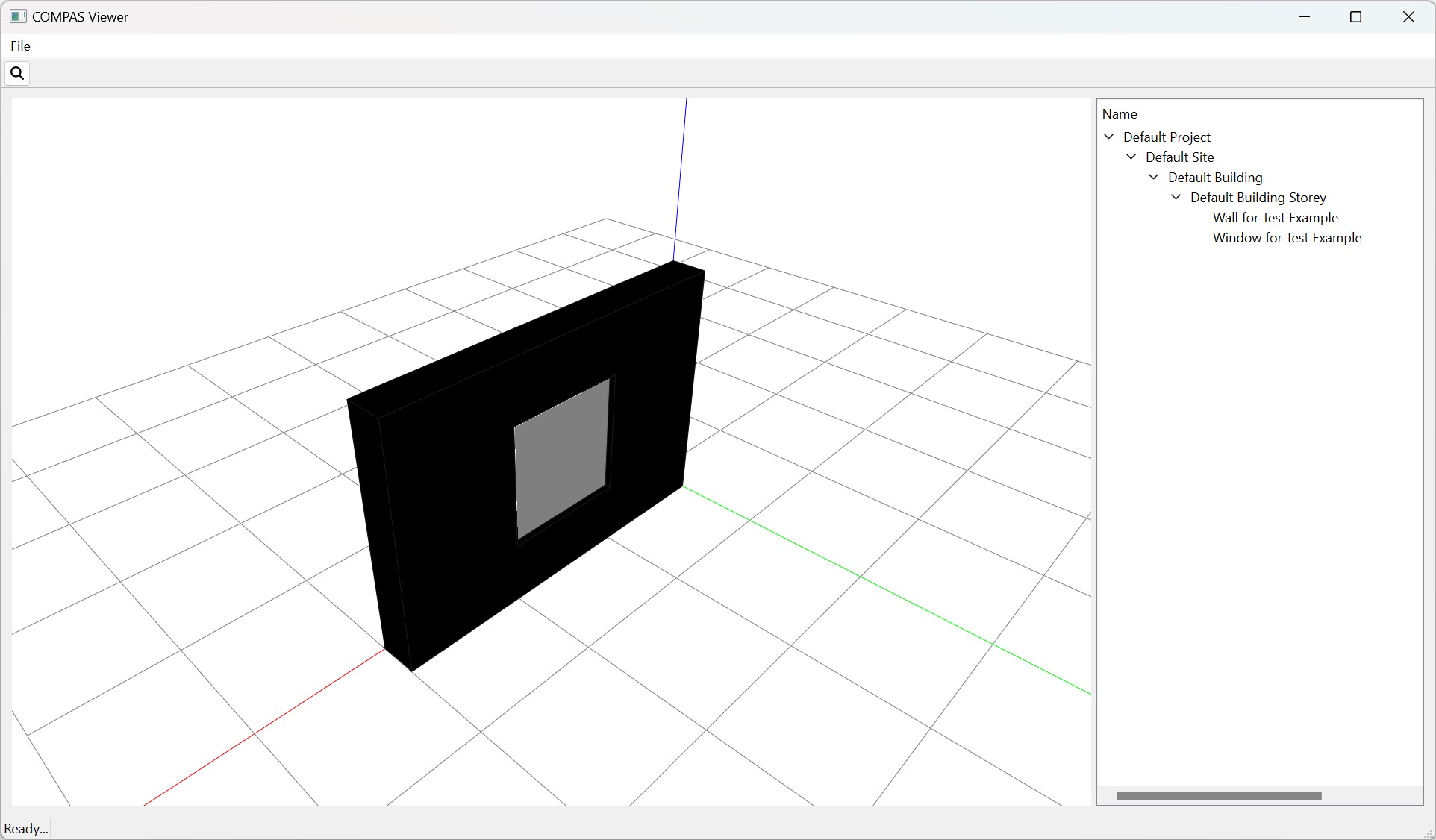Tutorial
This is a hello-world tutorial for the COMPAS IFC package. It shows how to load an IFC file and and inspect its contents.
Load IFC model
>>> from compas_ifc.model import Model
>>> model = Model("data/wall-with-opening-and-window.ifc")
Opened file: d:\Github\compas_ifc\scripts\..\data\wall-with-opening-and-window.ifc
>>> print(model.schema)
<schema IFC4>
Query entities
With model.get_all_entities() function, you can get a list of all entities in the model.
>>> all_entities = model.get_all_entities()
>>> print("Total number of entities: ", len(all_entities))
Total number of entities: 133
>>> for entity in all_entities[:5]:
>>> print(entity)
<Entity:IfcAxis2Placement3D>
<Entity:IfcCartesianPoint>
<Entity:IfcCartesianPoint>
<Entity:IfcCartesianPoint>
<Entity:IfcCartesianPoint>
Use model.get_entities_by_type() function to get a list of entities of a specific type (including their inherent ones).
>>> building_elements = model.get_entities_by_type("IfcBuildingElement")
>>> print("Total number of building elements: ", len(building_elements))
Total number of building elements: 2
>>> for entity in building_elements:
>>> print(entity)
<Window:IfcWindow Name: Window for Test Example, GlobalId: 0tA4DSHd50le6Ov9Yu0I9X>
<Wall:IfcWallStandardCase Name: Wall for Test Example, GlobalId: 3ZYW59sxj8lei475l7EhLU>
You can also use model.get_entities_by_name() function search elements with a specific name.
>>> name = "Wall for Test Example"
>>> walls = model.get_entities_by_name(name)
>>> print("Found {} entities with the name: {}".format(len(walls), name))
Found 1 entities with the name: Wall for Test Example
>>> print(walls)
[<Wall:IfcWall Name: Wall for Test Example, GlobalId: 3ZYW59sxj8lei475l7EhLU>]
Entity attributes
You can access the attributes of an entity using the attributes property.
>>> wall = walls[0]
>>> print(wall.attributes)
{'GlobalId': '3ZYW59sxj8lei475l7EhLU', 'OwnerHistory': <Entity:IfcOwnerHistory>, 'Name': 'Wall for Test Example', 'Description': 'Description of Wall', 'ObjectType': None, 'ObjectPlacement': <Entity:IfcLocalPlacement>, 'Representation': <Entity:IfcProductDefinitionShape>, 'Tag': None, 'PredefinedType': None}
You can also inspect the spatial hierarchy of the model. For example, you can get the parent of an entity using the parent property, or get the children of an entity using the children property.
>>> print("parent:", wall.parent)
parent: <BuildingStorey:IfcBuildingStorey Name: Default Building Storey, GlobalId: 2GNgSHJ5j9BRUjqT$7tE8w>
>>> print("children", wall.children)
children: []
For geomtric information, you can use the geometry property of an entity, if you have compas_occ installed, the geometry will be in form of Brep.
>>> geometry = wall.geometry
>>> print(geometry)
<compas_occ.brep.brep.BRep object at 0x000001F7480C97F0>
>>> print(geometry.is_solid)
True
>>> print(geometry.volume)
1.8
Visualisation
If you have compas_viewer installed, you can visualize the model using the model.show() function.
>>> model.show()

For more in-depth tutorials, please head to the next Examples section.